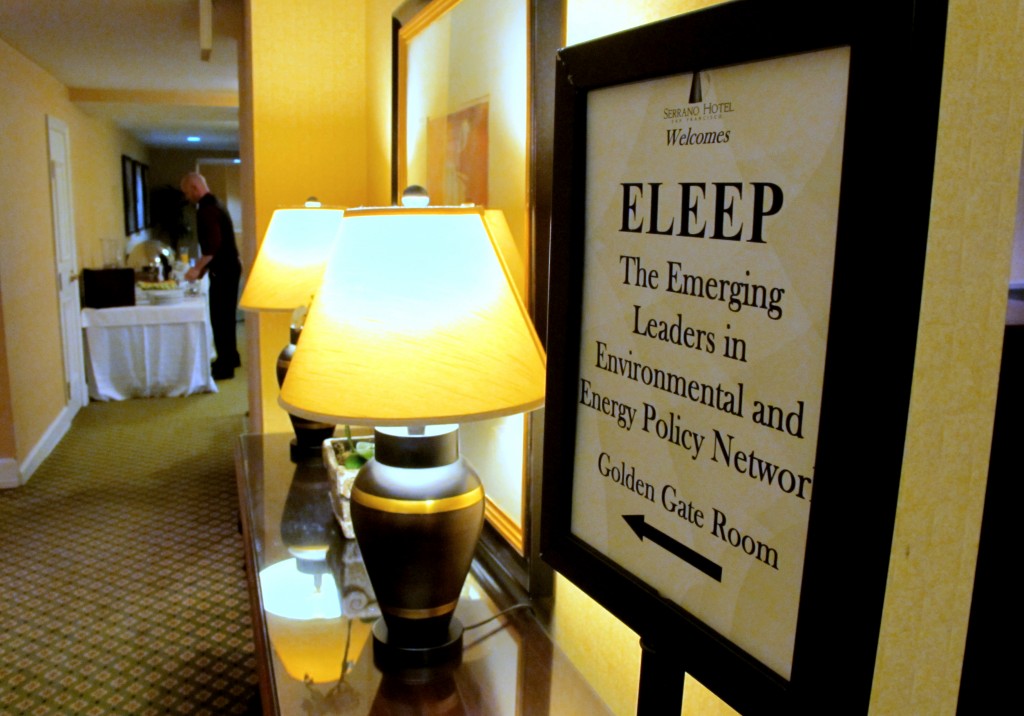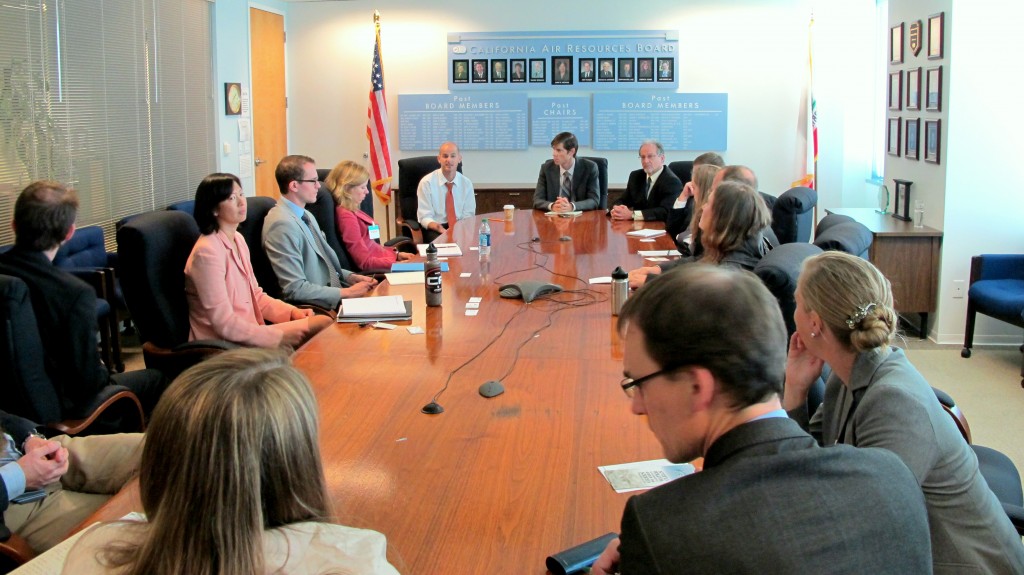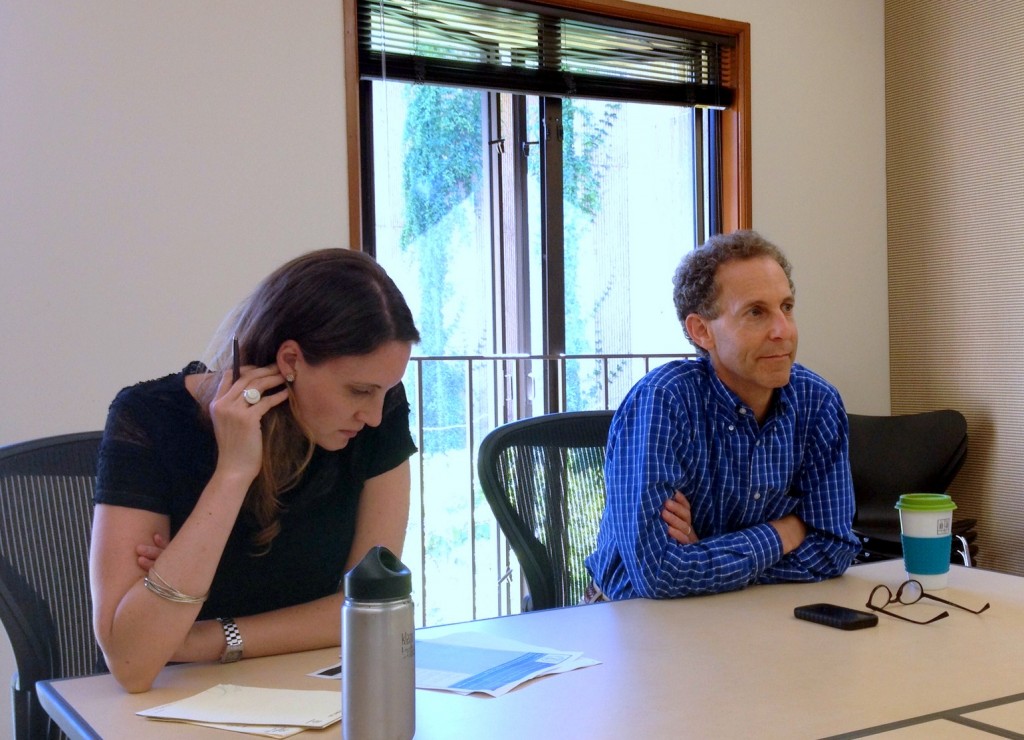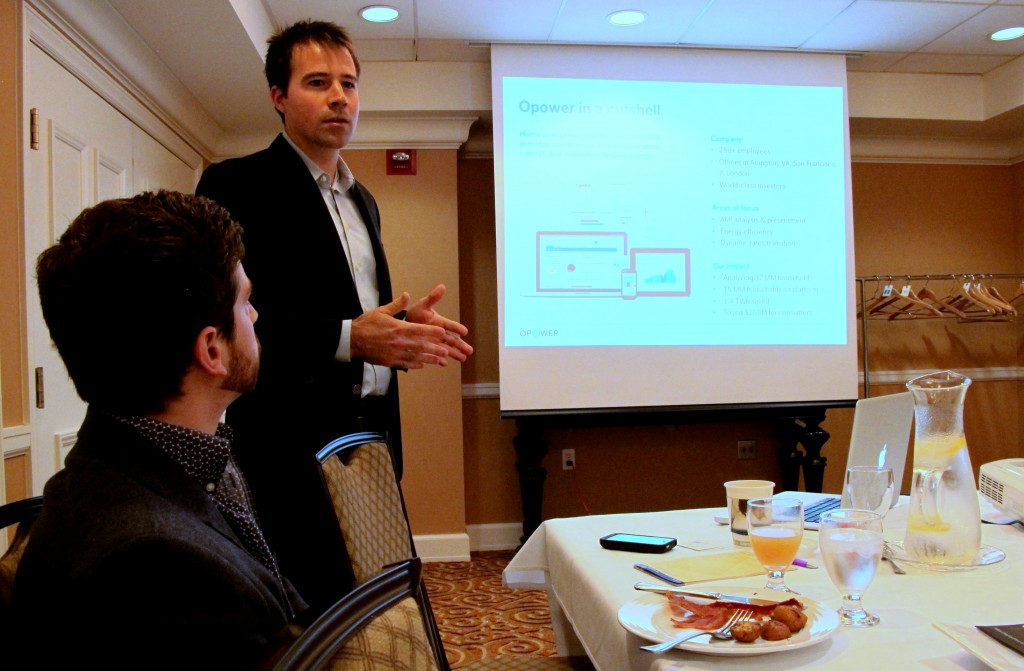EGU’s Science Communications Fellow, Edvard Glücksman, continues to share his thoughts as he takes part in a study tour with other members of the Emerging Leaders in Environmental and Energy Policy Network (ELEEP), a joint project of the Atlantic Council of the United States and the Ecologic Institute. This is the last post in the series. If you have any questions or comments, please contact Ed by email.
The California leg of our tour, which included meetings in San Francisco, Sacramento, and Silicon Valley, offered us a unique glimpse of the state of the energy sector in the world’s eighth largest economy.
Five days of meetings in Colorado and California offered ELEEP members a chance to understand first-hand some of the challenges of the US energy arena. (Credit: Edvard Glücksman)
Global Warming Solutions Act (AB32)
The development of California’s energy policy is heavily influenced by the Global Warming Solutions Act (Assembly Bill (AB) 32), approved in 2006 by former Governor Arnold Schwarzenegger. AB32 set the 2020 greenhouse gas emissions reduction into law, thus fully committing to reduce emissions to 1990 levels by 2020. To that end, the California Air Resources Board (ARB) was directed to begin developing its strategy and to prepare a scoping plan describing how to best reach 2020 targets.
The ARB’s scoping plan comprises a number of key strategies which broadly influence the state’s economy. These include reducing emissions and improving efficiency from agriculture, waste treatment, transportation, energy, and industrial sectors. Finally, the plan presents an outline of the carbon cap-and-trade programme, set to kick off this November with the auctioning of carbon allowances to the state’s highest emitting companies.
We visited the ARB in Sacramento at a pivotal time, with years of their work set to culminate in an implementation of the state’s cap-and-trade programme later this year. Based on our meeting with Virgil Welch, Stanley Young, and Edie Chang, among others, all heavily involved in the programme’s development, it was apparent that Californians view the development of their pioneering system not just as important for the state but also as a vital indicator of the viability of market-based emissions reduction mechanisms for the rest of the country.
ELEEP members briefed by the California Air Resources Board in Sacramento. (Credit: Edvard Glücksman)
Interdisciplinary solutions
Despite the major changes promised by AB32, many of our hosts agreed that even more needs to be done to make renewable energy economically competitive, especially in light of the country’s newfound abundance of cheap natural gas.
Dan Reicher and Jeff Ball of Stanford University’s Steyer-Taylor Center for Energy Policy and Finance are keen to point out that a fully viable renewable energy market could only be triggered by interdisciplinary action and fundamental policy shifts away from current tax break-driven strategies. Reicher, a former Department of Energy Chief of Staff and Director of Climate Change and Energy Initiatives at Google, claims there is a lack of communication between elements of the ‘policy-technology-finance’ triumvirate that he identifies as comprising the vital features of any potentially competitive renewable energy market.
Dan Reicher (right) of the Steyer-Taylor Center for Energy Policy and Finance addresses ELEEP members at Stanford University in Palo Alto, California. (Credit: Edvard Glücksman)
It is precisely with hope of such large-scale changes that the Steyer-Taylor Center was created, with the goal of applying economic rigour to the process of shaping debate around the world’s energy future. Apart from the challenges inherent in dictating policy through tax breaks, Ball emphasises the dangers of our “infatuation with the sexy”, citing policy that erroneously incentivises solar panels, for example, instead of home insulation, even though the latter may make more sense economically.
Although renewable energy does not appear to be the most cost effective solution compared to natural gas, our hosts at the Center for Energy Efficiency and Renewable Technologies (CEERT) in Sacramento remain confident that renewables are here to stay. For one, a commitment to a 30% renewable energy future is already signed. In addition, the environmental impact of extracting natural gas will be sure to move parts of the population towards renewables, despite slightly higher start-up costs. Likewise, it is precisely just those initial costs that make renewables appear more expensive when, in fact, their lifetime price may be far lower than the ever-fluctuating gas prices.
Improving public transportation is one of the key challenges facing policy makers in California. (Credit: Edvard Glücksman)
Behavioural shifts
At CEERT, and in many of our other meetings, we learned about the importance of understanding the dynamics of human behaviour in order to best guide the state’s energy future. In the most literal of forms, this psychosocial approach to policy is encompassed by OPower, an organisation set up to facilitate interactions between energy providers and customers by improving the accessibility of information and offering advice on how to improve household energy consumption. Currently, OPower works with over 70 utilities around the world, including 14 of the 20 largest in the US. The British company First Utility, which serves over 25,000 households across the UK, is the only European company currently subscribed to the scheme.
OPower’s most widely used tool comes in the form of customised home energy reports, which offer customers a more accessible breakdown of their household consumption. Its most powerful method, and what likely serves as the greatest factor in the on average 2% savings the company currently offers, is by placing customers in the context of their peers – how do households compare against their neighbours?
Jeff Lyng of OPower talks to ELEEP about improving energy efficiency by changing behaviour. (Credit: Edvard Glücksman)
The same behaviourally based approach to effecting change in energy policy can also be implemented more globally, to nations and international organisations. According to Julio Friedmann, Chief Energy Technologist at the Lawrence Livermore National Laboratory (LLNL), conventional “eat your peas” solutions, referring to those based on adherence to principles, are not the most effective. Rather, he claims, more integrative thinking is required, with successful changes potentially stimulated by international convening authorities and novel forms of international partnerships and mechanisms, exemplified by the Energy Partnership in China (EPC Solutions), where company representatives meet regularly to discuss current issues.
Friedmann is also hopeful that the world’s cities may hold answers to some of the currently most pressing energy challenges, in areas where conventional state and federal legislation may previously have failed. In cities, he explains, the mayor or town council holds concentrated power and can therefore stimulate meaningful local level change, sometimes even through very small town planning alterations (‘urban acupuncture’).
Transatlantic challenges
All in all, whether on the global scale proposed by Friedmann’s international partnerships or on the local level, such as with the Sustainable San Mateo project described to us at a town hall meeting in the Silicon Valley town of San Carlos, cross-cultural differences will forever remain an important factor in guiding the development of energy policy.
ELEEP receives a sustainability briefing at San Carlos Town Hall, San Mateo County, California. (Credit: Edvard Glücksman)
Perhaps partly motivated by the transatlantic makeup of our group, the social differences between the US and Europe developed into a major theme throughout our tour of Colorado and California. Our hosts repeatedly referred to Europe’s more vivid memories of moments of suffering as important for guiding social attitudes towards energy and the environment, what Rocky Mountain Farmers Union member Bill Midcap refers to as a “philosophy of finite limitations” as opposed to the US “pioneering unlimited” mindset. Europeans, he explains, are more aware of their surroundings in the global historical context, exemplified by their reluctance to embrace nuclear power after having witnessed first-hand the total devastation of the Second World War.
We return home from our trip cautiously optimistic that solutions for some of our most pressing energy challenges may not be entirely out of reach; perhaps initially developed on the local level, they will invariably have to take the shape of larger-scale socio-behavioural shifts, interdisciplinary solutions within a global context.
By Edvard Glücksman






